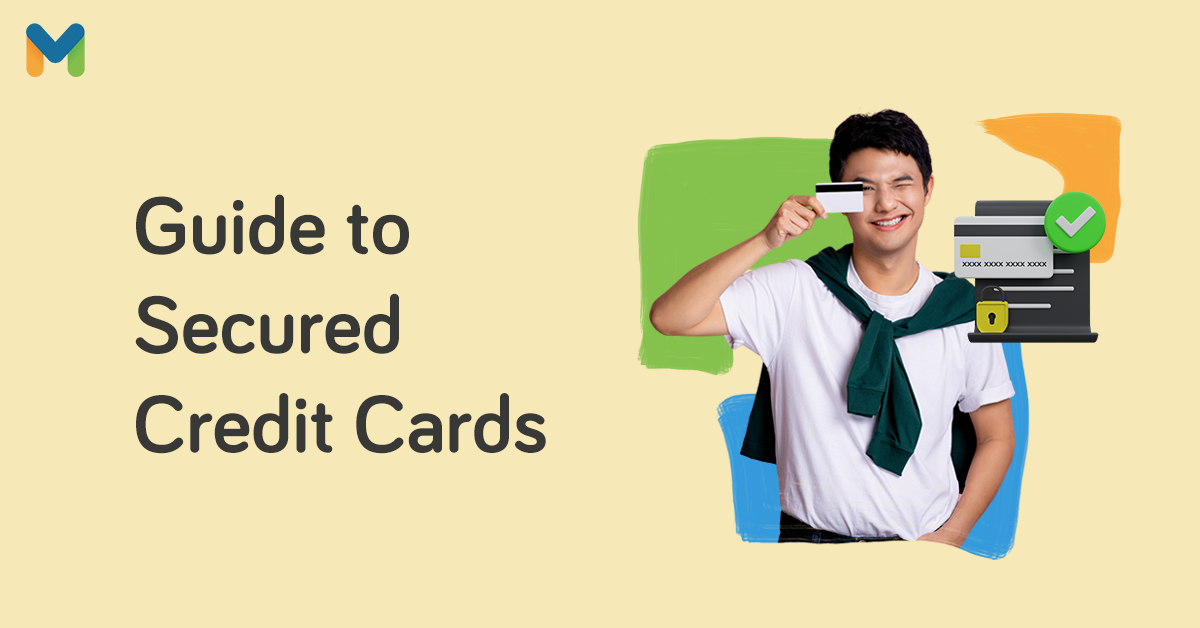Tracking your expenses is one of the steps to becoming a financially responsible spender. If you own a credit card, reading your statement will help you understand your spending habits.
This is something many first-time credit cardholders overlook, and one can’t blame them. With its numbers, figures, and countless parts, a credit card statement can be quite confusing.
Got your first credit card statement? We’ve prepared a comprehensive guide to reading it. Let’s go!
What is a Credit Card Statement?
More commonly known as a credit card bill, a credit card statement is a report that summarizes your credit card activities within a billing period. Do credit card statements show what you bought? Yes! This document lists your purchases, payments, and all other transactions made with your credit card.
For payments, your bill includes your balance, minimum amount due, and due date. General information shows your available credit limit. It also shows your rewards, such as points earned and redeemed.
Take note that the bank or credit card company issues credit card statements every month.
What is the Importance of Reading Your Credit Card Statement?
-4.png?width=674&height=449&name=Pics%20for%20blog%20-%20600x400%20(29)-4.png)
A lot of cardholders read their statement just to take note of the due date and the minimum amount due. But going through each of the details has benefits. So if you’re a first-time credit cardholder, make it a habit to read your statement.
Here’s why you need to read your credit card statements.
✅ You Won’t Miss Your Due Date
Remember that when you decide to get a credit card, you’re signing up for a responsibility. You need to pay back what you owe on time; otherwise, you’ll be penalized.
Your credit card statement of account includes the minimum amount due and the due date. These are the first things to check out when reading your bill.
✅ You Get a Picture of Your Spending Habits
With your bill, you can check not only your credit card statement balance but also all the transactions within the billing period. The list of your purchases, payments, and installments will help you determine whether or not you’re spending on unnecessary things.
Getting a picture of your past transactions will aid in optimizing your spending habits. It will also help you decide which of your past transactions are better off paid in cash.
✅ You Can Spot Unauthorized Charges
Checking your credit card statement will also help you see if you’re a victim of credit card fraud. Take a look at your list of transactions to see any unauthorized charges.[1] These might have escaped you even if you have your email, app, and phone alerts on.
✅ You Can Check for Billing Errors and Discrepancies
Errors in billing statements can happen to anyone. These include wrong amounts for a purchase you’ve made, computation errors, and incorrect dates. If you spot these mistakes and discrepancies early, you’ll have a lot of time to make your case and get your records corrected.
How to Read a Credit Card Statement: Knowing the Parts of This Document
What is on a credit card statement? Aside from numbers and figures, you may find a lot of unfamiliar terms on your bill.
Want to learn how to read a credit card statement? Here’s the credit card statement explained.
📌 Account Information
This section of your credit card statement includes your basic information, such as your name, account number, and mailing address. Make sure that all these details are correct.
📌 Account Summary
In this section, you’ll see the summary of your account activities and other important credit card details. It includes the following:
- Purchases or debits - This is the total amount of your purchases made with your card within a billing period.
- Payments or credits - The payments you’ve made or any credits put towards your account are recorded in this part.
- Other fees - These include charges on top of your purchases, such as late payment fee, balance transfer fee, and overlimit fee, among others.
- Previous balance - This is the amount that you haven’t settled yet. This is carried over from the last billing cycle.
- Total balance - This is the total amount that you owe to your bank or credit card company, including both your previous balance and new purchases or transactions.
- Credit limit - This is the ceiling amount of your credit card.
- Available credit - This is your remaining credit after your existing balance has been subtracted.
📌 Payment Information
This part of your bill includes details regarding your balance and the payment that you need to make. You’ll see the following:
- Total balance - As mentioned, this is the total amount charged to your card. If you completely pay this off, your balance will go back to zero.
- Minimum amount due - Also known as MAD, this is the smallest or minimum amount that you need to pay on or before the due date to avoid late fees and keep your account in good standing.
- Due date - This is the final date for settling your dues. If you pay your bill beyond this date, you’ll need to cover the late payment fee or any agreed-upon penalty.
See the terms above on this sample BPI credit card statement of account:

Read more:
- No Overspending and Late Payments: How to Manage Multiple Credit Cards
- Ask Moneymax: What is Credit Card Delinquency and How to Avoid It?
📌 The List of Transactions
This part lists all purchases and transactions made with your credit card within the billing cycle. Make sure your credit card statement of account includes the following details:
- The dates of card use - Your statement may include both the transaction date and the posting date.
- The name of the shop or vendor - Other banks list it as a “transaction description.” Either way, the name of the vendor should appear. Check for unfamiliar names to see if there are unauthorized transactions.
- Amount - This is the amount charged to your credit card.
Here's an example of the list of transactions on a Metrobank credit card statement of account:

Photo: Josh Apors (Kaskasan Buddies on Facebook)
🎁 Get approved and rewarded a gift of your choice worth up to ₱3,499
Eligible cards: Metrobank Titanium Mastercard®, Platinum Mastercard®, and World Mastercard®
Promo period: Until June 30, 2025
Get rewarded when you apply and get approved for your preferred card via Moneymax. Choose between eGift worth ₱2,000, Oral B Vitality 100 worth ₱2,095, or the Mi Smart Air Fryer 3.5L worth ₱3,499 🎁
Per DTI Fair Trade Permit No. FTEB-226753. Series of 2025. Terms and conditions apply.
Note: Applicant must be an existing credit cardholder in good standing for at least six months.
📌 Rewards Summary
If your credit card earns rewards, such as points and rebates, you can check this section for the rewards earned for the billing cycle. Typically, the following are listed:
- Existing points
- Points earned within the billing period
- Points redeemed/used
- Points adjusted
- Total points available (covering both existing points and new points)
📌 Interest Charges
This section summarizes the interest rates for different types of transactions. It usually includes sample computations to give you a better understanding of how your bill is calculated.
Usually, you’ll see the rates and sample computations for the following transactions:
- Retail purchases
- Cash advances
- Installment loans
- Balance transfers
On top of that, your credit card statement may come with a separate sheet that lists all the fees that you may incur. These include the annual membership fee, penalty, foreign currency conversion fee, installment processing fee, and pre-termination fee, just to name a few.
Check out this UnionBank credit card statement of account with interest charges:

Photo: Connie Evangelista (Kaskasan Buddies on Facebook)
Read more: How Much are the Credit Card Interest Rates in the Philippines?
📌 Fine Print
This part of your statement[2] includes important information about your credit card. Sometimes, you may find the definition of the terms used in your credit card bill. It should also contain the contact details of your bank.
To summarize, here's a quick look at a sample credit card statement. Note that depending on your bank, yours may look slightly different:

How to View Your Credit Card Statement
Your credit card statement is sent to your mailing address every month. But you have the option to view it in other ways, such as the following:
- Log onto your banking account (via website or app) to see your credit card statement online.
- Ask for an additional copy of your statement. Remember, though, that this comes with a fee.
- Enroll in your bank’s e-statement facility to view your online credit card statement. By choosing this option, your credit card statement will be sent to your email every month. Note that the Electronic Statement of Account (eSOA) is usually emailed one to two banking days after the last day of the latest billing cycle. If you can’t find the eSOA in your inbox, check the spam folder.
Credit Card Statement FAQs
-2.png?width=674&height=449&name=Pics%20for%20blog%20-%20600x400%20(30)-2.png)
Still got some questions regarding credit card statements? Keep reading to better understand this document.
1. What is the statement date on my credit card bill?
While you’re at it, let’s explain the difference between your credit card statement date vs due date.
Also known as the statement closing date, the statement date is the last day of the billing cycle. Usually, a billing cycle is approximately one month (about 28 to 31 days). All your purchases or transactions made before the statement date will appear on your current credit card bill.
The due date, on the other hand, is the last day you must pay your credit card balance.
Here's an in-depth explanation of the different dates to keep in mind:
2. What is a credit card statement balance?
A statement balance refers to the purchases, payments, and transactions made with your credit card within a billing cycle.
3. What is the difference between credit card statement balance vs outstanding balance?
A credit card statement balance is different vs outstanding balance, although they may overlap at times.
As explained, the statement balance only includes your transactions before the statement date or last day of the billing cycle.
The outstanding balance, also known as the current balance, is the total amount charged to your credit card, including all the charges, such as purchases, balance transfers, cash advances, interest charges, and fees. This also includes the recent charges found in your statement balance. It’s basically the amount you still owe.
Your outstanding balance changes depending on your credit card activity. Say your outstanding balance is ₱10,000. But if you’ve made a payment of ₱5,000, your new outstanding balance then becomes ₱5,000.
Read more: Say Goodbye to Late Payments with These Credit Card Payment Methods
4. How long should I keep my credit card statement?
This varies, but some recommend keeping your statements for up to 90 days, so you’ll have enough time for resolving disputes. But you may keep them for up to a year if you solely rely on them for tracking your expenses.
If you receive or view your statements via email or a banking app, it would be wise to download them and lock them with a password.[3]
Final Thoughts
If you’re a new cardholder, you will understandably have a hard time reading your monthly bill. But give it time, and you’ll get the hang of it. After all, going through your credit card statement not only helps you avoid late payments but also aids you in tracking your spending, which ultimately results in better financial habits.
Looking for an additional credit card? Here are our top recommendations. Compare your options and apply easily through Moneymax:
| Credit Card | Best For | Key Features |
|
UnionBank Rewards Credit Card
|
Rewards
|
|
|
Metrobank Platinum Mastercard®
|
Dining
|
|
|
BPI Rewards Card
|
Beginners
|
|
|
UnionBank Lazada Credit Card
|
Online Shopping
|
|
|
Petron BPI Card
|
Fuel Purchases and Auto Services
|
|
Sources:
- [1] Here’s How Credit Card Fraud Happens and Tips to Protect Yourself (CNBC, 2023)
- [2] Fine Print: What it is, How it Works, Criticism (Investopedia, 2023)
- [3] Protect Your Files on PC and Cloud: 10 Essential Tips and Best Practices (Microsoft, 2020)







![[UPDATE]_MB_CC_Choose_Your_Welcome_Gift_(June_2025)__1200x350](https://www.moneymax.ph/hs-fs/hubfs/%5BUPDATE%5D_MB_CC_Choose_Your_Welcome_Gift_(June_2025)__1200x350.png?width=438&height=128&name=%5BUPDATE%5D_MB_CC_Choose_Your_Welcome_Gift_(June_2025)__1200x350.png)







